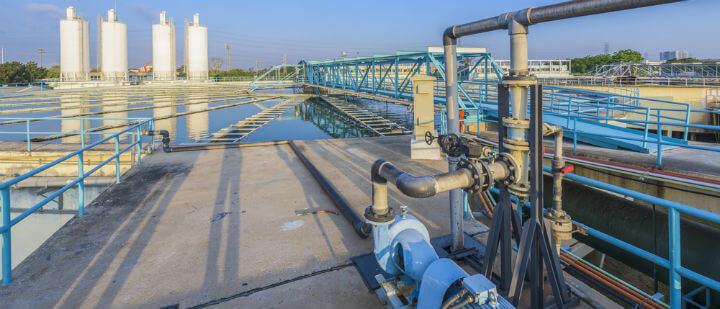Tertiary Treatment of Wastewater – Methods and Process
Written by AOS Treatment Solutions on September 11, 2018

Tertiary water treatment is the final stage of the multi-stage wastewater cleaning process. This third stage of treatment removes inorganic compounds, bacteria, viruses, and parasites. Removing these harmful substances makes the treated water safe to reuse, recycle, or release into the environment.
To find out how tertiary sewage treatment works, take a look at this overview of the methods and processes involved in the tertiary treatment of wastewater.
Preparing Wastewater for Tertiary Sewage Treatment
Before diving into the details of tertiary treatment of wastewater methods, let us very briefly review primary and secondary wastewater treatment.
Primary treatment of wastewater involves filtering out large solid contaminants. Secondary treatment then purifies the wastewater through biofiltration, aeration, and oxidation. These are all processes that help to remove sediment from the water.
The municipal water treatment solutions at AOS can help you execute the three stages of wastewater treatment. Through this responsible three-stage water treatment process, we protect both people and the natural environment from the harmful effects of untreated wastewater.
Tertiary Wastewater Treatment Methods
Tertiary treatment of wastewater normally means final filtration of the treated effluent. When needed, it sometimes involves using alum to remove phosphorus particles from the water. Alum also causes any solids that were not removed by primary and secondary wastewater treatment to group so they can be removed by filters.
When necessary, the filters are backwashed to remove the build-up of floc, which allows the filters to continue operating effectively.
Disinfection

An important part of wastewater treatment involves the addition of chlorine to the final effluent before discharge. This process injects chlorine into the headworks of a serpentine effluent detention chamber. Chlorination in wastewater treatment kills bacteria and viruses, and eliminates parasites such as Giardia and Cryptosporidium, which can cause very serious illnesses. In summary, this process disinfects water so that it is safe to reuse or recycle.
Dichlorination
The final stage of the tertiary wastewater treatment process involves removing the chlorine that was used to disinfect the water. This step is very important because chlorine is harmful to aquatic life. Chlorine also reduces biological water quality when it is present in high concentrations.
To remove the chlorine, a compound called sodium bisulfite is added to the water. Chlorine ions in the water react with this chemical and are removed. Once the chlorine concentration has been reduced to a safe level, the treated water is now considered clean enough to be safely released into the environment.
Tertiary Wastewater Treatment Solutions
To learn more about the tertiary treatment of wastewater and sewage, visit the AOS blog.
Be sure to check out the wastewater treatment services on our website. If you need more information about wastewater treatment, our team will be happy to explain how we treat and clean water to make it safe.
Contact us today to find answers to all your tertiary wastewater treatment questions.

